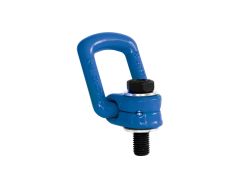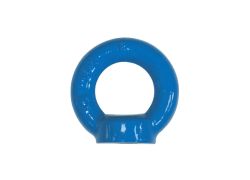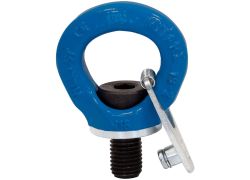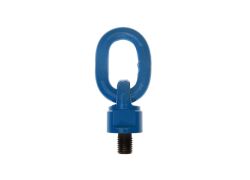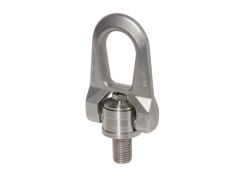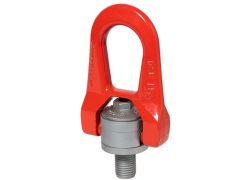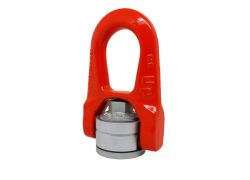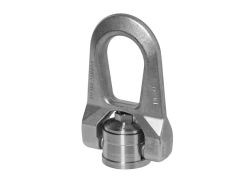Permanent lifting point
To start with, there are two options. A lifting eye can act as a temporary or permanent lifting point. In the case of a permanent lifting point, a weld-on lifting point, weld-on hook, or screwable lifting plate is often used. This frequently occurs with lifting beams, low-loaders, and the multiple types of transport of large loads. The applications are available with different maximum working loads, depending on the size of your lifting job. Please note that the weldable lifting eyes and lifting hooks are of high quality, but this quality can only be maintained when the correct welding procedure is applied by a qualified welder.
Metric thread or UNC thread
The size of the thread determines the size of the lifting eye and the maximum allowable working load. Before you start looking for suitable lifting eyes, we advise you to first map out both the load and the lifting situation thoroughly. Depending on the weight of the load and the size of the hole in which the lifting eye is fastened, you can choose from a UNC or metric thread. Metric threads are a worldwide ISO standard with specifications in millimeters. The UNC variant is in accordance with the American designation: corridors per inch. The lifting angle can also be a determining factor, the more the lifting eye is loaded in the sideways direction, the more the maximum permissible workload decreases.
Fixed lifting points
A lifting point is also called an eye bolt or eye nut. The name says it all, it is a bolt or nut with an eye on it. Lifting eyes must always be screwed completely into a suitable surface. Consider beforehand whether your lifting eye will be loaded at an angle. Not all lifting eyes are suitable for this purpose and may therefore only be loaded in an upright position. The rotatability of the lifting eye makes it easy to use the tool with different loads. When we talk about lifting eyes that are not tiltable or swiveling, we call these fixed lifting eyes.
Tiltable/swivel lifting point
With this type, the lifting ring can be easily positioned, which ensures an optimal lifting direction. The lifting eye can tilt 180° but can also swivel 360° around its own axis. Various lifting eyes from our range have ball bearings. This reduces friction and allows the lifting point to rotate smoothly under load.
Self-locking Lifting point
This lifting point is by far the easiest to use, it can be attached to the load with one click. With the use of a self-locking lifting eye, you save about 85% of the time compared to a standard lifting eye that you must screw in all the way. Due to the various options and lifting angles to which this lifting eye can be applied, you create flexibility in the workplace. The self-locking lifting eye is also available in a rotatable version and stainless steel. The rotatable version is also known as the smart version. Due to the rotation, the lifting eye automatically lifts the load in the optimal lifting direction.
Threaded lifting loops
This type is commonly used in the manufacturing and construction industry of precast concrete structures to facilitate the safe transportation and placement of structural components. The sturdiness and size of the attachment point make the lifting loop suitable for very heavy loads.
Stainless-steel
For industries where there is a risk of corrosion, such as the shipping, food, and car industry, we recommend using a stainless-steel variant of the lifting eye. Stainless steel is more corrosion resistant than steel, so the lifting eye will last longer in such industries. Our product range includes various stainless-steel variants of the lifting points.
Inspection
All lifting points must be inspected annually by an expert to ensure safety during use. An inspector does this visually, but the lifting eye must also be tested with test equipment once every four years. Checking before use is also very important. If traces of wear, damage, tears, and deformations are found, the lifting eye is unsafe. Always check whether an inspection sticker or annual color marking has been applied, this shows whether the lifting eye has been approved.
Certify
Do you also want to save costs and easily schedule your inspections? With us, you can have your lifting points certified for an additional cost of €3.50. With a valid certificate, you are always insured in the event of an accident. We, therefore, advise you to have all your lifting eyes certified and to have them re-inspected in time, for the safety of the user(s). Inspections with certification are usually cheaper than inspections for products without certification. When purchasing a certificate, you can keep track of the current inspection status in our digital certificate system Mitari Online, free of charge.
Advice
Are you curious about the correct lifting points for your lifting situation? Check out our various options or contact one of our advisors.




